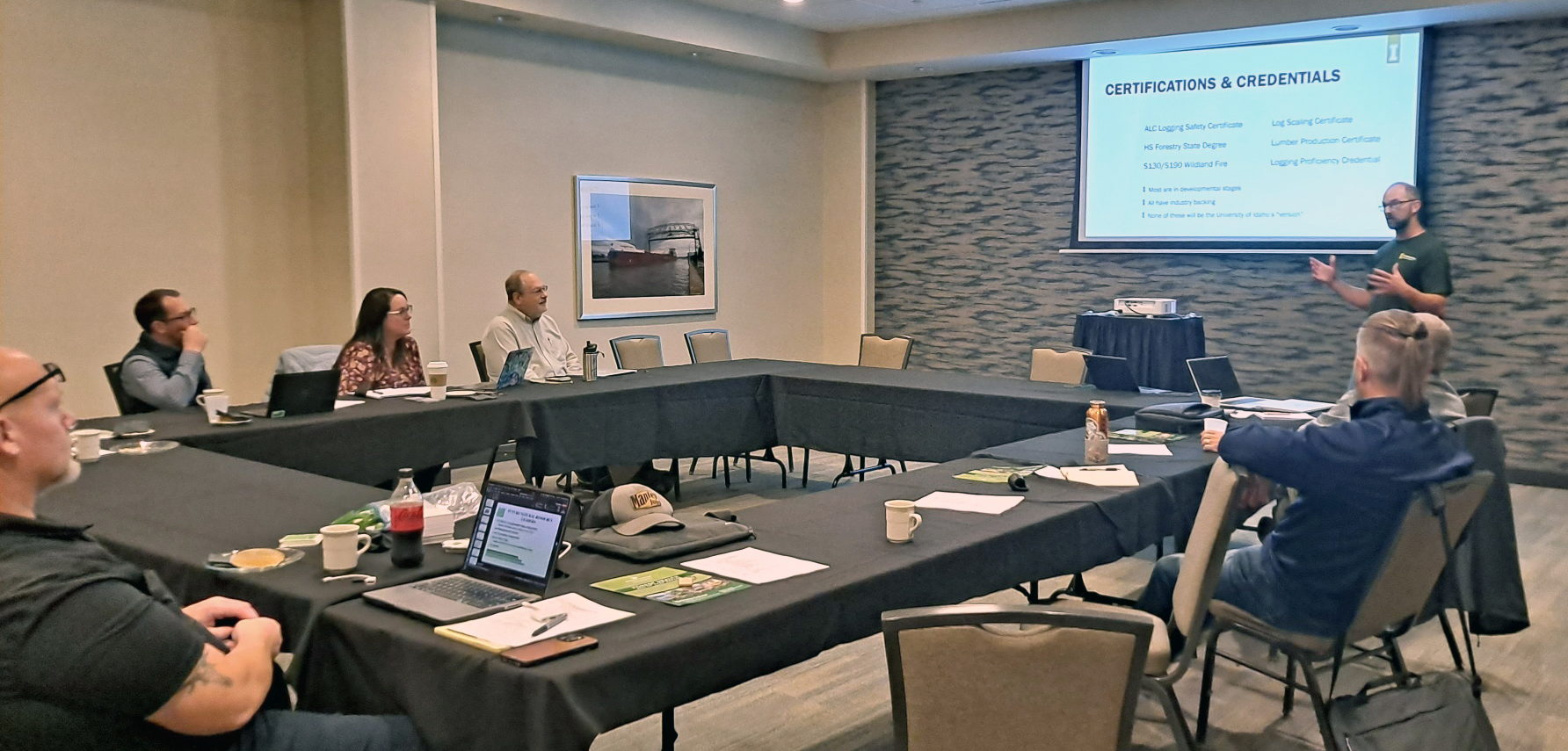 Forestry workforce programs gather for national summit
Forestry workforce programs gather for national summit
By Les Werner
WFC Director
HELP WANTED, NOW HIRING. These are familiar refrains across the country and ones that permeate nearly every sector of the economy. The forest industry has not been spared from workforce shortages and desperately needs an influx of skilled foresters, technicians, loggers, truck drivers, and laborers. Reversing this trend, particularly in rural communities that are home to many of these facilities and operations, will require innovative approaches to workforce recruitment and development. It also will require support from the forestry and forest products industries to increase the visibility of career opportunities and developing sustainable education and training programs aligned with high-demand career pathways.
As a first step toward providing a framework to address the recruitment and development issue, 10 people representing forest industry workforce development programs in six states gathered in Duluth, Minn. on Oct. 19, 2023, for a forest operations training summit, co-sponsored by the Forest Resources Association. Representation included:
- Minnesota Forest Industries
- Northern Arizonia University
- Shasta College, California
- University of Idaho
- Future Natural Resources Leaders, Oregon
- University of Wisconsin-Stevens Point
 Because of the relatively short planning window for the summit, Northern Maine Community College, Forestry Works (Alabama), and the University of Arkansas-Monticello could not participate but expressed a keen interest in being part of future discussions.
Because of the relatively short planning window for the summit, Northern Maine Community College, Forestry Works (Alabama), and the University of Arkansas-Monticello could not participate but expressed a keen interest in being part of future discussions.
The goal of the first summit was for the organizations to provide an overview of their programs and share critical information related to recruitment strategies, training curriculum, and obstacles associated with development and implementation, funding mechanisms, and program sustainability. Key takeaways from these discussions included:
- The training curriculum of each program reflected regional industries and needs but shared commonalities: training opportunities on equipment used in professional operations, safety, equipment maintenance, chainsaw operation and hand-felling, and transportation.
- Recruitment efforts need to be diversified, span the education cycle, and include traditional (i.e., job centers) and non-traditional (i.e., veterans, justice-impacted individuals) venues.
- Recruitment messaging surrounding career opportunities and training programs must resonate with the audience (i.e., young people and their parents/guardians). A one-size-fits-all message will not work.
- Training program development and start-up capital were typically funded through grants from either states or the federal government. Equipment manufacturers provided cost-shares toward the purchase of large equipment in several programs.
- Equipment and capital investments and annual operating costs, including personnel, for the individual training programs are extremely high and typically exceed the revenue potential that can be generated through tuition/participation fees.
- Dedicated personnel (full-time) are critical to programmatic success, including oversight of field operations and equipment upkeep and maintenance.
- Sales from timber harvests support operations in several programs.
- A Forest Operations Training Program (FOTP) cost analysis tool is being developed that evaluates the cost of operation relative to proposed fee structures.
- Financial support from the forest products industry is needed.
- There was a strong desire by those in attendance to formalize discussions and share information through the creation of a national network of training program providers.
Participants in the first summit were unanimously in support of continuing the conversations through a combination of annual online and in-person meetings that would move around the country. The tentative agenda is for the group to convene again via an online meeting in early 2024 and again in-person in April 2024 at Shasta College in California. Recognizing that the list of participating programs is far from complete, the group would like to extend an invitation to other programs across the county that are engaged in these training efforts to join the conversation. If you are interested or know of an organization that would find value in participating, please reach out to me.
This article was posted Nov. 13, 2023.
